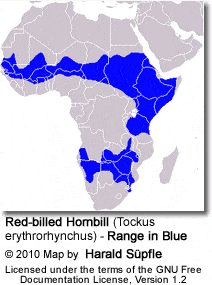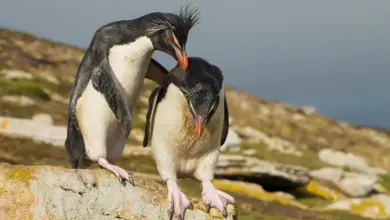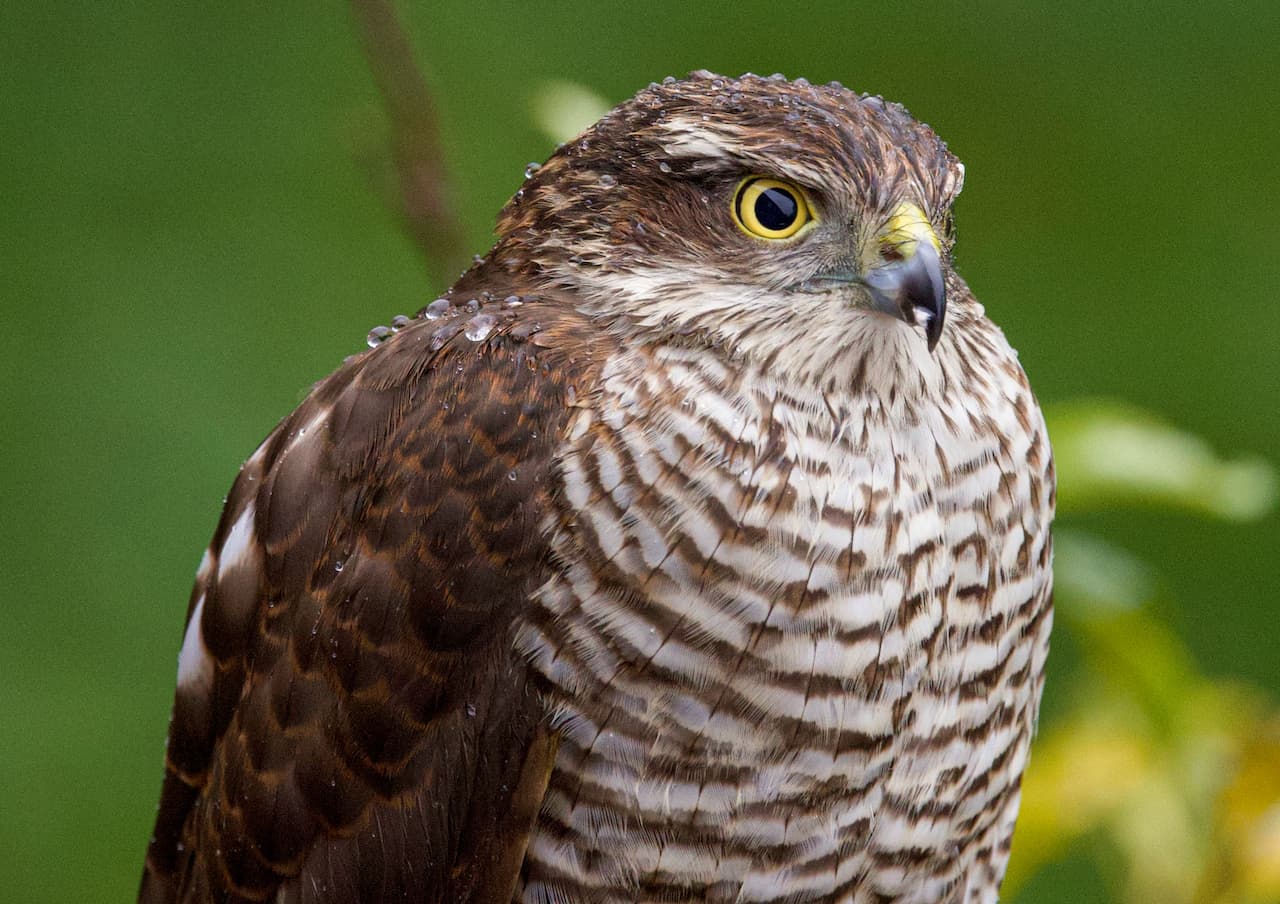Red-billed Hornbill (Tockus erythrorhynchus)
The Red-billed Hornbills (Tockus erythrorhynchus) are hornbills that occurs naturally in Africa.

Taxonomy:
Some authorities split this species up into different races:
- Northern Red-billed Hornbill (T. erythrorhynchus) – Nominate Form
- Western Red-billed Hornbill (T. kempi)
- Tanzania Red-billed Hornbill (T. ruahae)
- Southern Red-billed Hornbill (T. rufirostris)
- Damara Red-billed Hornbill (T. damarensis)
Description
The Red-billed Hornbills are large birds measuring about 42 cm in length, including the long tail.
Even though they are relatively large birds, they are one of the smaller hornbill species.
They have a mostly grey head and upper plumage and are mostly whitish below.
There is a black stripe on the back of the head.
The bill is long and curved and lacks the casque (growth atop the bill) found on other hornbill species.
Males and females look alike, but the female has a smaller bill.
Breeding / Nesting
The nest is typically a cavity in a tree. The average clutch consists of three to six white eggs. During the incubation (brooding of the eggs), the nest entrance is typically blocked off with a plaster of mud, droppings, and fruit pulp. The purpose of this is to keep the nest, including the brooding female, eggs, and young chicks protected from predators. A narrow opening is left to allow the male to transfer food to the mother and the chicks.
As the chicks grow and the nest gets crowded, the female will break out of the nest and rebuild the wall, again leaving an opening that is just big enough for both her and the male to continue feeding the chicks.
Diet / Feeding
Red-billed Hornbills mostly feed on insects, fruit, and seeds. They usually forage on the ground. Outside the breeding season, feeding flocks will form.
Vocalizations
Their vocalizations are described as noisy accelerating tok-tok-tok-toktoktok calls.
Hornbill Information … Hornbill Index of Species … Hornbill Species Photo Gallery




